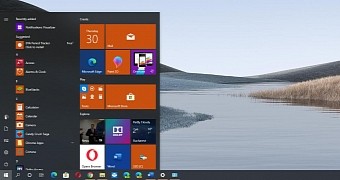Microsoft reported $36.9 billion in revenue in FY20 Q2, an increase of 14% year over year, and once again, the company praised the performance of cloud products, which helped boost Commercial Cloud revenue by no less than 39%.
But a closer look at the numbers that Microsoft shared in the earnings release show that Windows has once again become a money-making machine for the Redmond-based software giant, with the More Personal Computing division alone generating $13.2 billion.
This is more than both the Intelligent Cloud unit, which made $11.9 billion last year, and the Productivity and Business Processes division whose revenue increased 17% to reach $11.8 billion.
While the More Personal Computing unit scored an increase of just 2%, Windows OEM revenue increased no more, no less than 18%. A similar growth was recorded by Windows Commercial products and cloud services, whose revenue jumped 25% during the quarter.
The death of Windows 7
There are several reasons for the Windows revenue increase, including the Windows 7 end of support. Windows 7 no longer receives updates since January 14, and customers are recommended to upgrade to Windows 10.
Amy Hood, executive vice president and chief financial officer of Microsoft, says demand for Windows 10 was strong during the quarter.
“In Windows, overall PC market growth was stronger than we expected and benefited from the low prior year comparable related to the timing of chip supply to our OEM partners. OEM Pro revenue, which makes up roughly 40 percent of total Windows revenue, grew 26 percent driven by continued momentum in advance of Windows 7 end of support and strong Windows 10 demand. The benefit from the low prior year comparable drove roughly 11 points of growth,” she said in the conference call with analysts after the earnings release.
“OEM Non-Pro revenue, which makes up roughly 20 percent of total Windows revenue, increased 4 percent. This quarter, continued pressure in the entry level category was more than offset by roughly 7 points of benefit from the low prior year comparable and the timing of license purchases from an OEM partner. Inventory levels ended the quarter in the normal range.”
The performance of Windows is expected to remain strong in the next quarter, Microsoft says, thanks to what Hood projects as “healthy demand,” again powered by the end of support for Windows 7.

 14 DAY TRIAL //
14 DAY TRIAL //